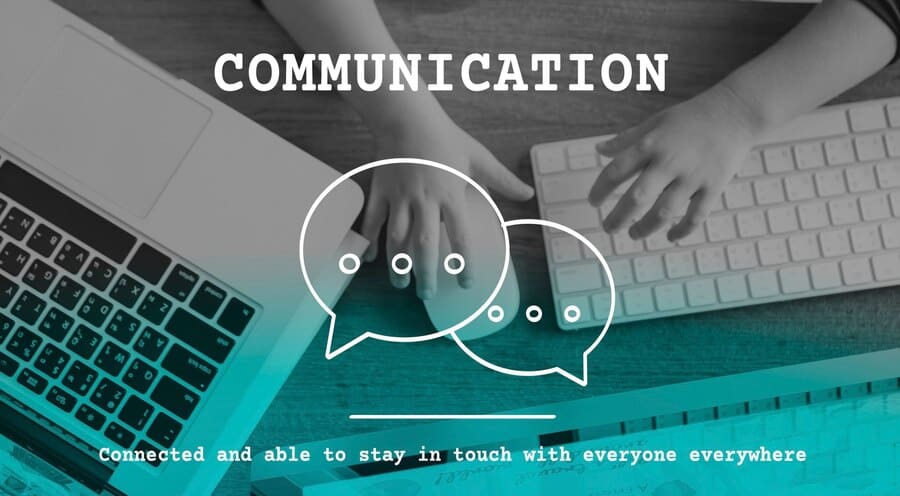Last updated on April 1, 2024 at 11:37 am
Effective communication is the foundation of a successful company culture. But in today’s fast-paced environment, where frontline employees are constantly interacting with customers and dealing with various tasks, transparent communication can often take a backseat. This can have detrimental effects on not only the work performance of these employees but also on the overall morale and cohesion within the organization. In this blog post, we will delve into how transparent communication plays a crucial role in improving company culture, specifically in frontline settings and explore practical strategies that leaders can implement to foster open and honest communication among their teams.
The Challenges of Frontline Communication
The cornerstone of organizational success lies in fostering robust relationships through effective communication. However, numerous challenges often act as roadblocks, creating barriers between leadership and frontline managerial positions. Let’s delve into these obstacles:
- Information Gap: Frontline workers may feel disconnected when they lack timely and comprehensive updates from senior management. This absence of crucial information regarding organizational changes, policies, and goals can lead to confusion and disengagement.
- Hierarchy and Intimidation: The hierarchical structure prevalent in many workplaces can create an intimidating atmosphere, causing frontline employees to feel hesitant about interacting with management. Fear of potential repercussions or a perceived lack of receptiveness from higher-ups can deter open dialogue.
- Limited Feedback Channels: Some organizations lack formalized avenues for frontline staff to provide input, resulting in unaddressed concerns and a sense of being unheard among frontline teams.
- Mismatched Priorities: Divergent perspectives and priorities between frontline workers and senior management necessitate transparent communication about organizational objectives to ensure alignment and mutual understanding.
- Communication Overload: Frontline workers often face an inundation of information and tasks, making it challenging to discern what’s essential. Simplifying communication and focusing on key updates are vital to prevent overwhelm and maintain clarity.
- Ineffective Communication Platforms: The choice of communication tools plays a significant role in facilitating effective communication. If platforms are not user-friendly or accessible, they can hinder information dissemination and collaboration. Management must ensure that communication channels cater to the diverse needs of frontline workers.
- Language and Jargon Barrier: Technical or corporate jargon may hinder comprehension among frontline staff. It is essential to utilize simplified language in communication to ensure clarity and accessibility across all levels of the organization.
- Resistance to Change: Unclear communication about changes can breed uncertainty and resistance among frontline workers. Transparent explanations are crucial to addressing concerns and facilitating smooth transitions.
- Recognition and Appreciation: Acknowledging the contributions of frontline workers is paramount for sustaining engagement and fostering a sense of purpose within the team.
- Cultural Differences: Within organizations boasting diverse workforces, understanding and respecting cultural nuances are essential for promoting inclusivity and effective communication.
To cultivate a positive company culture within frontline teams, managers must prioritize open communication, establish clear feedback mechanisms, and ensure that everyone is kept informed of developments. This fosters stronger collaboration between frontline workers and management, leading to increased productivity and task accomplishment.
Also Read: 8 Internal Communications Podcast Ideas – theEMPLOYEEapp
Why is Transparent Communication Essential for Frontline Teams?
In frontline roles, clear and open communication is essential. It’s not just about talking; it’s about being transparent. This transparency builds trust and accountability among team members, which is key to success. Being open and honest isn’t just a trendy idea; it significantly improves work satisfaction and boosts overall happiness within the organization.
The importance of open communication in frontline teams is stated below:
1. Increased Employee Engagement
Being transparent and clear in communication directly impacts employee engagement. When frontline workers are kept informed about the latest developments and are given a voice in decision-making, they tend to be more involved and motivated in their roles. This connection often leads to increased job satisfaction and ultimately enhances performance across the entire organization.
According to the Frontline Employee Experience Survey 2022, a staggering 72% of frontline workers emphasize the importance of transparent communication in building trust and confidence in their workplace. This highlights the significant impact of open communication on fostering a positive work environment.
2. Reduced Stress and Improved Well-being
The American Psychological Association highlights key stressors affecting employees in the workplace, including low salaries (56%, up from 49% in 2019), long working hours (54%, up from 46%), and a lack of growth opportunities (52%, up from 44%).
In such situations, transparency acts as a beacon of guidance. When information is clear and openly communicated, it alleviates uncertainty and anxiety for frontline employees. Access to information equips them to address challenges more effectively, empowering them to navigate their work environment with greater confidence.
3. Better Decision-Making and Problem-Solving
Open and transparent communication unlocks a multitude of perspectives, facilitating rational decision-making processes. Frontline employees’ insights are particularly invaluable for process improvement. Research indicates that companies excelling in racial and ethnic diversity often achieve economic returns surpassing the national average. This underscores the vital role diverse viewpoints play in driving business success.
4. Stronger Relationships and Trust
Fostering honesty and openness cultivates trust among all members of the workplace, spanning from regular employees to supervisors. When communication flows freely, collaboration improves, leading to increased productivity. According to a study by the Harvard Business Review, organizations characterized by high levels of trust enjoy numerous benefits, including reduced stress levels (74% less), heightened workplace energy (106% more), enhanced productivity (50% higher), fewer sick days (13% less), increased workplace happiness (76% more engagement), greater overall life satisfaction (29% greater), and decreased burnout rates (40% less). These findings underscore the pivotal role trust plays in creating a positive work environment.
Establishing a culture where individuals feel liberated and empowered is essential for ensuring frontline employees feel valued, motivated, and engaged. While openness is paramount, it’s also valid to acknowledge concerns about privacy and information overload. Companies must strike a delicate balance between transparency and respecting confidentiality to uphold strong levels of trust and mutual respect in the workplace.
Implementing Transparent Communication in Frontline Settings
Having established the pivotal role of transparency in frontline communication, it becomes imperative to address a critical question: how can organizations foster transparent communication in the workplace? Let’s explore some strategies to achieve this goal:
1. Establishing Open Communication Channels
Implement scheduled meetings, periodic surveys, and town hall gatherings as effective channels for communication within the organization. However, it’s not solely about disseminating information; equally vital is fostering two-way interaction and practicing active listening. This exchange ensures that employees not only express themselves but also feel genuinely heard and valued.
2. Sharing Information Regularly and Proactively
Transparency in communication necessitates the regular and proactive dissemination of information regarding company performance, strategic plans, and organizational changes. According to a survey by Edelman, an impressive 88% of employees express a desire for their employers to openly share information about the organization’s plans and challenges. This underscores the crucial role of transparency in organizational dynamics.
3. Encouraging Feedback and Asking Questions
Create a supportive environment where individuals feel comfortable sharing their thoughts and asking questions without fear of repercussion. Employ strategies such as anonymous suggestion boxes and regular check-ins to promote candid communication. Actively incorporating feedback into decision-making processes demonstrates its value. Moreover, clearly outlining examples of open communication sets the tone for constructive dialogue.
4. Addressing Concerns and Rumors Honestly
Promptly and transparently address misinformation and rumors within the organization. Provide context and evidence to dispel concerns effectively. Honesty in addressing issues not only resolves immediate challenges but also builds credibility and trust over the long term.
Summing Up
The transformative power of transparent communication in frontline settings cannot be overstated. By fostering an environment where openness, honesty, and trust are valued, organizations can cultivate a culture that empowers employees, boosts morale, and ultimately drives success. Through clear channels of communication, both challenges and triumphs can be navigated with greater ease, leading to a more cohesive and resilient workforce. Embracing transparency not only enhances employee engagement and satisfaction but also solidifies the foundation upon which a thriving company culture can flourish.
Frequently Asked Questions
1. How can transparent communication improve company culture?
Transparent communication improves company culture by promoting openness, honesty, and accountability. When employees feel that their voices are heard and respected, they are more likely to be engaged, motivated, and committed to the organization’s goals. This leads to a positive work environment where collaboration thrives and relationships are strengthened.
2. What are the benefits of transparency for frontline employees?
For frontline employees, transparency provides clarity on organizational goals, expectations, and decision-making processes. It reduces uncertainty and ambiguity, leading to higher job satisfaction, lower stress levels, and increased confidence in their roles. Additionally, transparent communication fosters a sense of belonging and loyalty among frontline teams, ultimately improving retention rates.
3. How can leaders promote transparent communication in frontline settings?
Leaders can promote transparent communication in frontline settings by leading by example, actively listening to employees, and providing regular updates and feedback. They should create channels for open dialogue, encourage questions and concerns, and be transparent about both successes and challenges. By prioritizing transparency, leaders set the tone for a culture of trust and collaboration.
Subscribe To The theEMPLOYEEapp Newsletter
Comments are closed.




